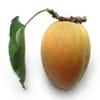Benefits
Health Benefits
Asthma treatment, Cancer prevention, Controls blood pressure, Digestive aid, Heart care, Maintains hormonal balance, Regulation of heart rate, Skin cleansing, Skin rejuvenation
Cancer prevention, Heart care, Maintains healthy cholesterol level, Treatment of skin Diseases
General Benefits
Boosts immune system, Controls blood pressure, Digestive aid, Eye care, Maintains healthy cholesterol level, Strengthens bones
Boosts immune system, Digestive aid, Helps in weight loss, Maintains healthy cholesterol level
Skin Benefits
Hydrates skin, Reduces wrinkles, Treatment of dark spots, Treatment of skin diseases
Anti-aging benefits, Skin rejuvenation, Treatment of skin diseases
Hair Benefits
Good conditioner, Regulates hair growth, Rejuvenates scalp, Softening mask, Treatment of dandruff
Protects hair, Regulates hair growth, Treatment of dandruff
Allergy
Allergy Symptoms
Abdominal cramps, Anaphylaxis, Breathing difficulty, Diarrhea, Itching of mouth, Itching sensation in throat, Swelling of mouth, tongue or lips, Vomiting, Wheezing
Hives, Inflammation of nose, Swelling of mouth, tongue or lips
Side Effects
Dizziness, Headache, Nausea, Vomiting
Allergic reaction
Recommeded for
Pregnant Women
Yes
Yes
Lactating Women
Yes
Yes
Best Time to Eat
Best if taken as a breakfast (or empty stomach), As a snack in the late afternoon, Don't consume at night and before bed, Eat the fresh ones, avoid mixing with any other foods, don't eat after meal.
Along with meal, As a snack in the late afternoon, Don't consume at night and before bed, Don't eat after meal
Nutrition
Serving Size
100 g
100 g
Carbs
11.00 g
99+
27.12 g
6
Fiber
2.00 g
26
4.90 g
11
Sugar
9.00 g
28
11.00 g
17
Protein
1.40 g
16
1.07 g
22
Protein to Carb Ratio
0.13
13
0.04
24
Vitamins
Vitamin A (Retinol)
96.00 mcg
6
22.00 mcg
19
Vitamin B1 (Thiamin)
0.03 mg
31
0.11 mg
3
Vitamin B2 (Riboflavin)
0.04 mg
23
0.03 mg
30
Vitamin B3 (Niacin)
0.60 mg
25
0.90 mg
11
Vitamin B5 (Pantothenic Acid)
0.24 mg
22
0.46 mg
5
Vitamin B6 (Pyridoxin)
0.05 mg
33
0.10 mg
15
Vitamin B9 (Folic acid)
9.00 mcg
26
14.00 mcg
21
Vitamin C (Ascorbic Acid)
10.00 mg
99+
29.00 mg
31
Vitamin E (Tocopherole)
0.89 mg
11
0.10 mg
37
Vitamin K (Phyllochinone)
3.30 mcg
20
0.50 mcg
32
Lycopene
0.00 mcg
9
0.00 mcg
9
Lutein+Zeaxanthin
89.00 mcg
15
22.00 mcg
29
Choline
2.80 mg
29
9.80 mg
7
Fat
0.40 g
21
0.23 g
32
Minerals
Potassium
259.00 mg
26
490.00 mg
5
Iron
0.40 mg
29
0.54 mg
23
Sodium
1.00 mg
20
2.00 mg
18
Calcium
13.00 mg
28
17.00 mg
24
Magnesium
10.00 mg
25
25.00 mg
9
Zinc
0.20 mg
14
0.12 mg
21
Phosphorus
23.00 mg
22
30.00 mg
17
Manganese
0.08 mg
36
0.06 mg
99+
Copper
0.08 mg
30
0.08 mg
26
Selenium
0.10 mcg
16
0.60 mcg
10
Fatty Acids
Omega 3s
0.00 mg
38
18.00 mg
26
Omega 6s
77.00 mg
26
48.00 mg
34
Sterol
Phytosterol
18.00 mg
6
Not Available
Water Content
86.35 g
31
70.65 g
99+
Ash
0.75 g
15
0.93 g
10
Calories
Serving Size
100 g
100 g
Calories in Fresh Fruit with Peel
48.00 kcal
25
Not Available
Calories in Fresh Fruit without Peel
Not Available
103.00 kcal
4
Calories in Frozen Form
Not Available
Not Available
Calories in Dried Form
241.00 kcal
33
Not Available
Calories in Canned Form
63.00 kcal
17
Not Available
Calories in Foods
Calories in Juice
58.00 kcal
23
300.00 kcal
3
Calories in Jam
200.00 kcal
26
Not Available
Calories in Pie
265.00 kcal
31
80.00 kcal
99+
Characteristics
Type
Tree fruit
Fruit vegetable, Tropical
Season
Summer
All seasons
Varieties
Gold Cot, Tilton, Wenatchee, Goldbar, Gold Kist, Tomcot, Harcot, Brittany Gold, Harglow, Hunza, Moorpark, Patterson and Royal Rosa
Koqo, Tamaikora, Temaipo, Uto Kuro, Samoa, Buco Ni Viti and Kulu Dina
Seedless Variety
No
No
Color
Orange, Yellowish-orange
White, Yellow
Inside Color
Yellow
White
Shape
Oval
Oval
Texture
Fleshy
Tough
Taste
Smooth, Sweet
Bland
Origin
China
South Pacific
Grows on
Trees
Trees
Cultivation
Soil Type
Well-drained
Loam, Sand, Sandy loam, Well-drained
Soil pH
6.5-8
6-7.5
Climatic Conditions
Dry, Hot
Humid, Rainfall, Warm
Facts
Facts about
- 9 Jan is considered as the National Apricot Day.
- Apricots have been around for more than 4000 yrs.
- In latin, the meaning of apricot is 'precious'.
- 95% of apricots in the US are produced by California.
- The milky sap of breadfruit tree is used as glue & bark is used to make papers.
- Breadfruit tree produces 1st fruit after 2-3 years from planting & remains productive for decades.
- The seeds of breadfruit are edible.
In Alcoholic Beverages
Wine
Yes
Yes
Beer
Yes
Yes
Spirits
Yes
Yes
Cocktails
Yes
Yes
Production
Top Producer
Turkey
Jamaica
Other Countries
Algeria, Egypt, France, Iran, Italy, Morocco, Pakistan, Spain, Uzbekistan
Africa, India, United States of America
Top Importer
United States of America
United States of America
Top Exporter
France
Jamaica
Scientific Name
Botanical Name
Prunus armeniaca
Artocarpus altilis
Synonym
Not Available
Artocarpus communis or Artocarpus incisa
Classification
Domain
Eukarya
Eukarya
Kingdom
Plantae
Plantae
Subkingdom
Tracheobionta
Tracheobionta
Division
Magnoliophyta
Magnoliophyta
Class
Magnoliopsida
Magnoliopsida
Subclass
Rosidae
Magnollidae
Order
Rosales
Rosales
Family
Rosaceae
Moraceae
Genus
Prunus
Artocarpus
Species
P. armeniaca
A. altilis
Generic Group
Rose
Mulberry












